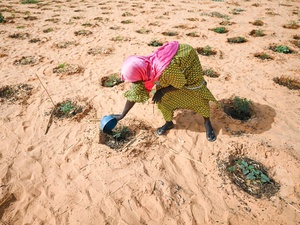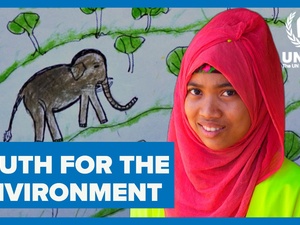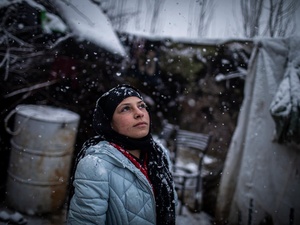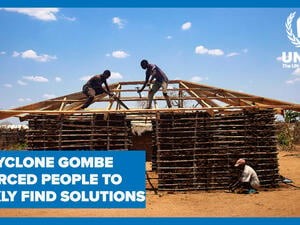Refugees and locals join hands to restore the environment in Rwanda

Refugees and locals join hands to restore the environment in Rwanda
Eugene Rurangwa Gituku, a Congolese refugee living in Rwanda's Kigeme camp, stands in the tree nursery where he and his group grow seedlings to plant in the camp and surrounding areas.
The 65-year-old refugee is confident these trees will improve air quality in the camp and, most importantly, bind the soil with their roots in an area that is threatened by high rates of erosion and landslides.
“There is a big difference now when it rains since we started planting trees,” he says. “Before the soil was very weak and it would just wash away, but the tree roots keep the soil together.
“When we lived in the Congo, we had a lot of forests, so now it feels like home, and we can sit in the shade of the trees when it is too hot,” he adds.
"Now it feels like home."
Situated on two adjacent hills in the southern part of Rwanda, Kigeme refugee camp has been hosting over 14,000 Congolese refugees since 2012. But a drainage channel combined with increasingly heavy rains linked to climate change contributed to the formation of two large ravines between the hills on either side of the camp.
“There were many consequences, children would fall into the ravine,” explains Edson Munyakarambi Sebutozi, a 54-year-old Congolese refugee and the camp president. “Families that used to live here have been scattered, some of them relocated to Mahama [another refugee camp, 250 kilometres away].”
He added that having to relocate was a major setback for refugees who relied on businesses they ran in the camp to supplement their aid rations.
The ravines have also resulted in injuries.
Apollinaire Uwimana, 47, was digging terraces near the ravine one day when a small landslide swept him into tit. His arms and neck were seriously injured, and he had to stay in hospital for six months.
“I used to work and support my family, but with this disability, I can’t do anything,” Apollinaire says.
Rather than accept the situation, Eugene, Edson, and other refugees decided to tackle the issue head-on. Together with Rwandans living near the camp, they received training on environmental protection from UNHCR, the UN Refugee Agency, and World Vision, an international NGO. They learned that planting trees would counter the ravine's expansion and protect the soil and the environment around them.
Since 2019, when a group comprising of 14 refugees and six Rwandans started growing tree seedlings, they have planted over 37,000 trees in the camp and 26,000 in the host community. Varieties include eucalyptus, alnus, and fruit trees.
“There used to be bare hills here, then we found solutions together with our hosts,” explains Edson.
The tree planting has slowed down the growth of the ravines while relocations and community awareness sessions have reduced the number of injuries related to them.
Since the Declaration was adopted, UNHCR has been working with States and all other relevant stakeholders to develop and initiate the practical application of the CRRF in a number of countries. As of February 2018, the CRRF is formally applied in a dozen countries, including two regional contexts in Africa and Central America.
For further information on the CRRF and its application to particular refugee situations, see Comprehensive Refugee Response Framework: Delivering more comprehensive and predictable responses for refugees.









